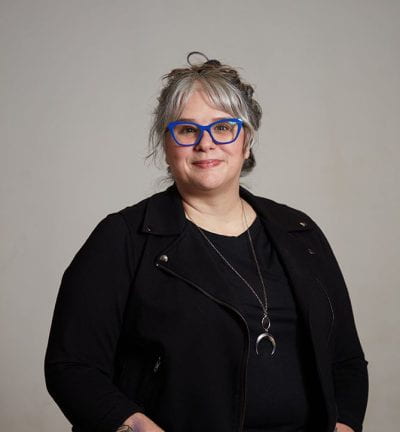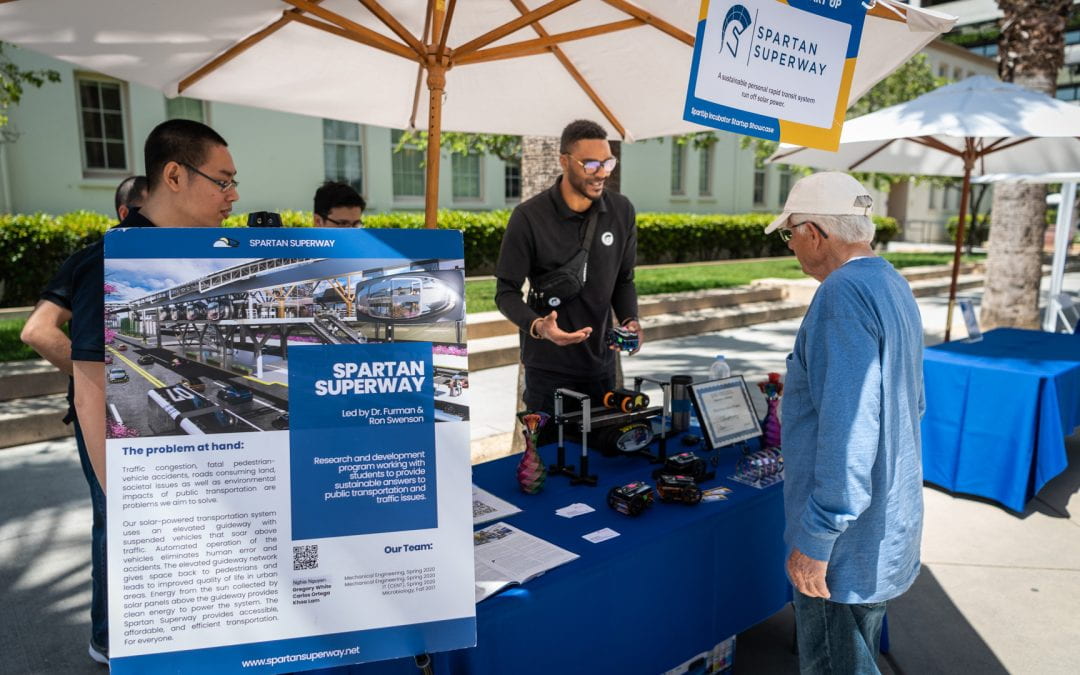Expressions Presents: Kim Knight: Fashioning Confidence in Tech
By Catherine Nguyen, ’24 English
This article was originally published by the College of Humanities and the Arts in the winter 2023 edition of Expressions, a newsletter created by students in HA-187: Creative Team Practicum. The internship course gives students the opportunity to gain professional experience in writing, graphic design, photography, and video production.
For some people, codes are intimidating, while others may find a loom just as intimidating. Kim Knight, associate professor of humanities, is the founder of Fashioning Circuits, a workshop that connects maker culture, activism and technology. Her research in emerging media has led her to realize that what keeps people from experimenting with digital tools are bad experiences with technology–and themselves. Knight hopes to break these barriers of intimidation by incorporating tools that many may have already used once in their lives.

Assistant Professor of Humanities Kim Knight is excited to introduce Spartans to the world of digital media.
From printers to complicated programs, Knight strives to understand technology with a “mess around with it” attitude, wanting to know what buttons do and how things operate. However, throughout Knight’s time in office spaces, she noticed how many of her coworkers feared technology and, more concerning, were too afraid to ask for help getting over those fears. “I used a lot of office technology in my past jobs and have always been curious about why people were intimidated by them,” Knight says.
This led to the creation of Fashioning Circuits, a feminist project through which Knight hoped to enable women or anyone willing to try out the technology. Participants integrate technology into textiles, such as an LED electronic light dress. “A sewing machine is a technology, though many people do not think of it as such,” she says. Knight believes that the biggest step toward conquering these technological fears is the confidence to explore and create. By allowing participants to explore the connection between media and technology to domestic skills, such as sewing or crocheting, Knight teaches them new creative practices. “Enabling confidence is part of the work I am doing,” she says.
Knight’s main goal at SJSU is to introduce people, specifically those from marginalized communities, to learn how to use digital media to their advantage. “Students intimidated by coding are often also intimidated by the maker practices,” says Knight. “Some students are afraid of a sewing machine as much as they are afraid of coding.” This fear of technology is also perpetuated by how intimidating certain technology is. Giving underrepresented groups access to use technology will help them expand their horizons and offer another set of tools to address wider systems of power and oppression.
Knight acknowledges both the benefits and drawbacks of society heavily relying on digital media. “Being networked had a very positive effect on our ability to communicate and find one another,” she says. “However, the anonymity of being able to contact someone behind a keyboard can lead to negative effects.” With online spaces, communication is something everybody has access to, but according to Knight, this can lead to more harmful outcomes for marginalized communities. Unfortunately, online harassment is common on social media platforms. Two people can speak up about social issues, but one may get targeted with hate simply because of their race. With the hope of promoting critical thinking about how we use technology today, Knight poses questions about these issues to her students: “What gets privileged in our conversations about knowledge and culture — and how can we do it differently?”
Technology is used in almost every aspect of our lives now, including the creative arts. If there is limited representation of who makes technology, it can affect people’s perception of it as well. “If there aren’t women or gender minorities majoring in STEM fields that have the facilities with these advanced tools, then that problem is going to carry into producing digital media, whether that is from a development side of things or even usability,” Knight explains. She combats this with Fashioning Circuits, allowing a diverse range of students to participate in the technological aspects of creative media.
By interconnecting maker culture, activism and technology, Knight seeks to bring digital media opportunities to students at SJSU, especially to students who may fear technology. “Through Fashioning Circuits and courses I’ve taught,” Knight says, “I’ve seen success in reducing students’ internal barriers and fears of using technology.”




